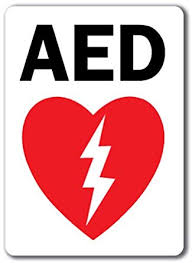Story by Angela Gray of the Office of Risk Management and Insurance
I lost my dad to sudden cardiac arrest more than 20 years ago. I was in college at the time and got a call from a neighbor telling me I should come home as soon as possible. Being a kid, I probably said something like, “It’s Sunday night, I have class tomorrow! I can’t come home!” The seriousness of her voice soon convinced me that I should make the three-hour drive that night. I did, and when I got home, I was devastated to learn that he did not make it. 
That was 1995. Way before Automated External Defibrillators (AEDs) were common place in public, much less available for homes. If someone suffers from a sudden cardiac arrest event, every minute that passes without defibrillation decreases their chances of survival by approximately 7 percent to 10 percent.
Now, AEDs are increasingly available and encouraged for public use. You’ve probably walked by one without even noticing. Did you know that CSU has over 240 AED units installed throughout the multiple campuses and throughout the state of Colorado (53 in the on-campus stadium alone)?
Finding an AED
Knowing where the closest AED is located can save a life. Look for the 3D signs in hallways and lobbies of buildings, or utilize this interactive CSU map to find the nearest unit. Simply select the “Health and Safety” option from the left-hand navigation menu. From there, select “AEDs.” Clicking on a heart pin for a specific location will give you a detailed description and photo of the AED within the building.
Finding a unit is pretty easy, and so is using one. AEDs are designed for anyone to use, with or without training. The unit tells you what to do using step-by-step audio cues, and it assesses and delivers an electric shock if necessary. The unit will not administer a shock if there is a heartbeat present. You can find more information about AED locations on campus here and sign up for CPR/AED/First Aid classes here. This includes online AED orientation training.
Would you like to learn more about AEDs? Representatives from the Risk Management and Insurance Department will be on the Lory Student Center Plaza from 10 a.m. to 2 p.m. on Thursday, Oct. 18, to share information about sudden cardiac arrest and how AEDs and CPR can be used to help in an emergency. Students, faculty, staff and community members are welcome to join us for interactive lifesaving demonstrations, information and prizes.
If you have additional questions or concerns, please contact the department or visit its website.
Office of Risk Management and Insurance
AED@colostate.edu
(970) 491-6169